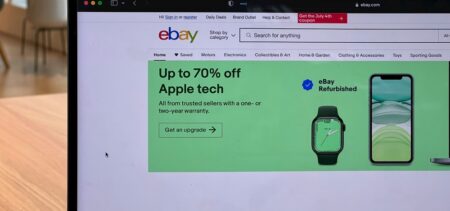In recent years, the role of e-commerce within companies changed dramatically. The COVID-19 pandemic has forever affected the way consumers and businesses interact and trade. Once you factor in the unique circumstances we are still facing, it’s clear why companies across all industries must address more complex concepts, demands, and priorities when it comes to e-commerce. And as the global economy continues to change at a rapid pace, online businesses should adopt new strategies to remain competitive.
Improve the Post-Purchase Customer Experience
The lines between service, marketing, and commerce are getting increasingly blurred as customer journeys become more distributed and complex. Moreover, customer expectations are continuously rising—with 86% of consumers saying that the experience a company provides is as important as its products and services.
As consumers reevaluate their expectations and relationships with brands, customer loyalty is becoming more valuable. The truth is that it’s the post-purchase touchpoints where customers are won or lost. So, what can you do to improve the post-purchase experience?
Once a customer completes the checkout process, the post-purchase experience begins. By taking the uncertainty out of the situation, you can put customers at ease, and maintain their trust in your brand. Assistance from customer service representatives, confirmation emails that include the approximate delivery date, and constant updates regarding delivery should be a given.
It would also be beneficial to follow up by providing additional content that adds value to the customer—such as the ability to track their package or join a loyalty program. Offering recommendations based on past activity could also be effective.
When choosing between similar products from different brands, most customers value convenience. Easy and free returns are one of the most sought-after post-purchase services. In fact, it’s the second most frequently cited benefit that makes a consumer more likely to buy from a particular brand. Given this, one would think that adopting a fair and appealing return policy would be a thriving practice among businesses. But although it is slowly gaining momentum, many brands are still lagging behind. Studies show that only 49% of online stores offer free returns to their customers. However, companies with higher return rates are also more likely to be successful when it comes to e-commerce, because they give customers a sense of security in their purchases. Implementing a return policy that is convenient for consumers should be a top priority in your e-commerce strategy.
It’s essential to pay attention to your clients’ post-purchase experiences. Not only could it influence future purchasing decisions, but it could also help you get to know them better.
Consider Digital Marketplaces
For B2B buyers, the buying experience a company offers is just as important as the products or services, according to a recent Salesforce report. To meet expectations, business-to-business sellers are working on creating more enjoyable buying experiences. This includes digital marketplaces where buyers and sellers can engage directly with each other. These online platforms have become an important way for B2B buyers to research their options and connect with multiple brands and products at once.
Amazon is one of the largest business-to-business online marketplaces in the world. In 2020, Amazon’s B2B platform, Amazon Business, generated approximately $19 billion in revenue in the US. It is projected that the value of products purchased on the platform will reach $59 billion by 2025.
The main advantage of joining a digital marketplace as a B2B seller is the ability to reach a larger audience. Recent studies have shown that one-third of B2B buyers make half or more of their purchases on marketplaces. Insights into the market’s pricing structures, and access to features and services you would not otherwise have access to, such as better marketing analytics and the ability to lower shipping costs, are also key benefits of joining a digital marketplace. Ultimately, these digital platforms promise broader economic impact and expand opportunities for smaller businesses.
However, there are also many opportunities for marketplace creation. As a matter of fact, 33% of B2B sellers say that launching their own marketplace is a priority in the next two years. The demand for niche B2B marketplaces is on the rise. The more industry-specific and tightly seller-focused the emerging marketplaces are, the more targeted traffic they are likely to generate.
Make the Switch to Headless Commerce
Headless commerce is the separation of the front-end and back-end of an e-commerce application, giving businesses the freedom of expression to build to their own specifications.
A recent study shows that companies with a headless architecture are more likely to expand quickly into new channels than companies without a headless architecture.
A headless commerce architecture allows for endless customization because there are no design constraints. It gives businesses the tools to create customized buying experiences that customers can’t get anywhere else. Critical to this are APIs that ensure coordinated, brand-consistent experiences across multiple channels. Delivering new features and online buying experiences that engage customers and stay ahead of their expectations should be a key part of any company’s innovation strategy. In a traditional e-commerce model, developing new experiences can require updates to both the front-end and back-end systems, which can take up a lot of time and resources. Headless commerce solves this problem.
The most important benefits that headless commerce can offer your business are increased flexibility, improved integration between systems, and the ability to customize digital experiences and add new sales channels. These can translate into significant time and cost savings. With headless commerce, businesses can respond to market trends and launch new front-end experiences quickly, with a minimum of costly back-end development.
If you are toying with the idea of switching to headless commerce, the benefits are usually worth the effort, as this architecture can significantly grow your business.
Conclusion
As digital commerce continues to take new forms and customer expectations are constantly rising, online businesses across all industries must adapt to the changes. While it can sometimes be challenging to find new tactics to stay competitive in an ever-changing market, there are many cost-effective strategies you can use to gain a competitive edge. Improving the post-purchase customer experience, accessing digital marketplaces, and updating e-commerce architecture can offer online businesses new opportunities to outshine their competitors.































